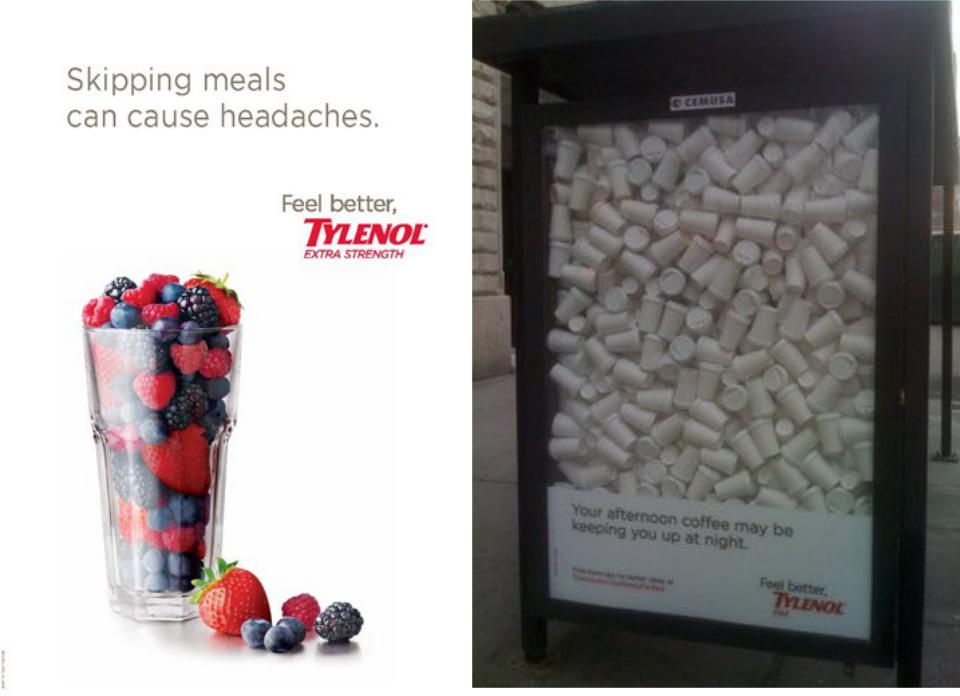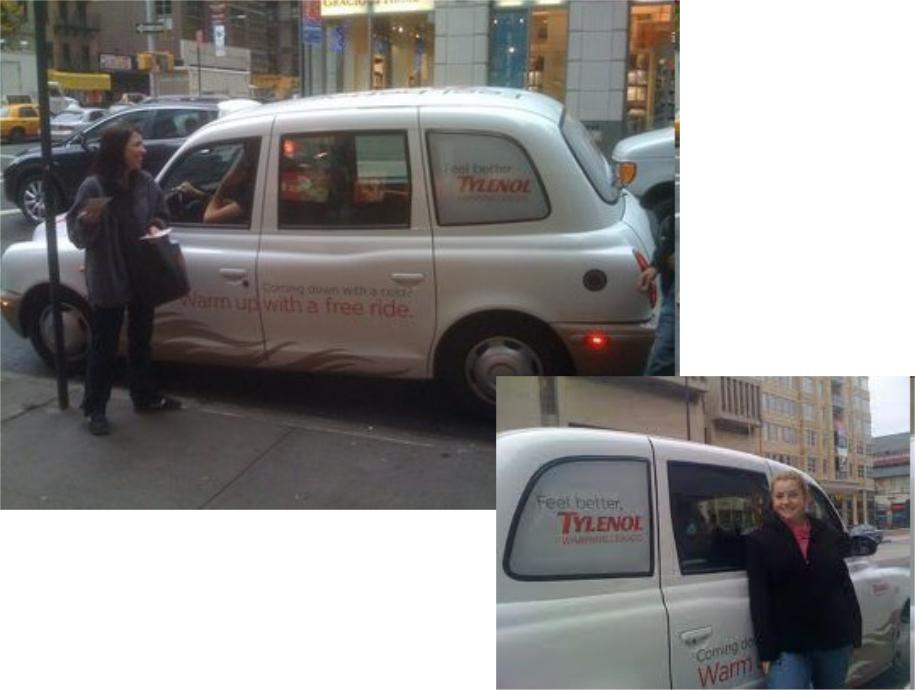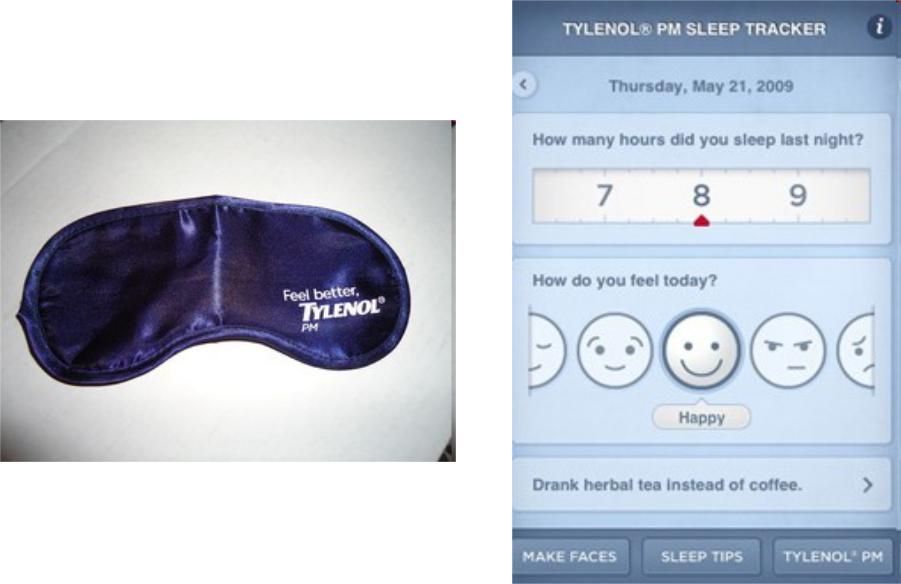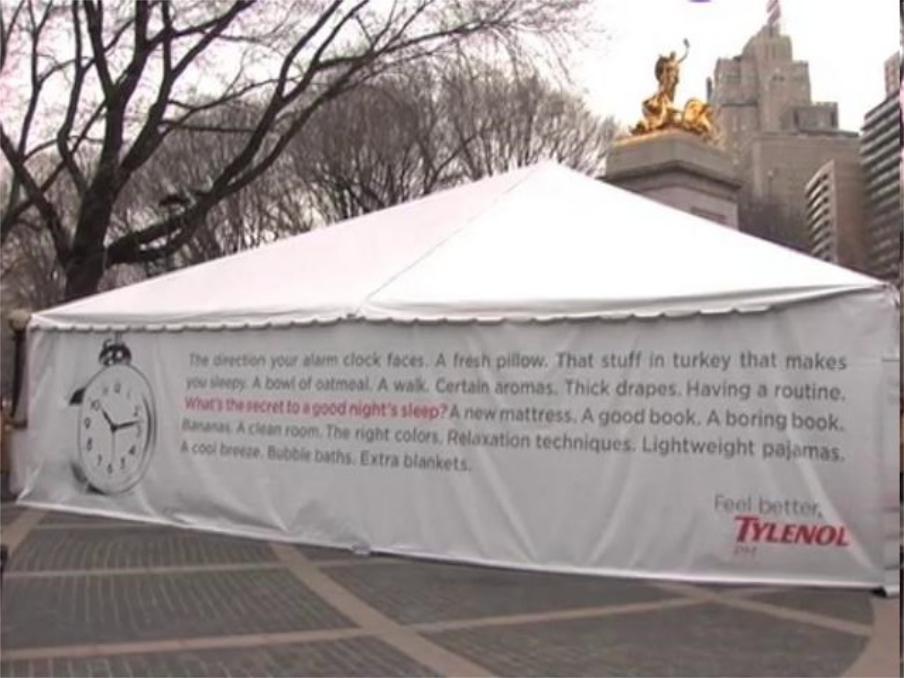
Творчество в МК Пирогова Ю.К.
Кейс «Тайленол»
на основе материалов Effie Awards
Strategic Challenge
The Situation: Old Brand Needs New Life
•Tylenol® has been around for more than 50 years, and although it is one of the most trusted brand names, the business had been trending downward since 1999. Its annual domestic sales were more than $1 billion but despite this leadership status, Tylenol had lost over two share points since 2005 (IRI, All Outlets 2007, 2008). To put that into context, each share point is roughly equivalent to $37 million (IRI FDTKS). It was an old brand that needed new life.
The Business Challenge: Do More With Less
•Tylenol appeared to be a mega-brand on paper, but it certainly wasn’t showing up in the world that way. Since it houses several sub-brands that compete in different pain states (e.g., Tylenol Arthritis, Tylenol PM, Tylenol Cold, Children’s Tylenol), the master brand’s footprint was weakened and the media spend was diluted. Beyond supporting multiple sub-brands/targets, we were challenged with supporting multiple initiatives, such as the 2008 Olympics and our NASCAR partnership. We had no new significant product innovations to help create news.
•Our competitors, competing in far fewer pain states, were significantly outspending us—sometimes by ninefold (TNS Strategy 2007). We faced increasing competitive pressure from private label products as they were beginning to act more and more like brands—with marketing communications support and product innovation.
The Category Challenge:
Nothing To Say, No One To Listen
•Historically, the brand’s strongest equities were trust and safety. Yet, our trust equity (driven largely by how the brand handled the cyanide scare in the 80’s) wasn’t one that could be explicitly leveraged—trust had to be built by what we did, not said. Our safety equity (driven largely by the unique safety advantages of the medicine) was old news to consumers.
•And competitors would fight tooth and nail to prevent Tylenol from making new claims that would refresh this proposition. They continued to flood the market with new forms and claims that made efficacy the issue—an issue Tylenol can’t compete on alone. What’s more is that when we did have a competitive product advantage, we couldn’t communicate it. Although Tylenol is literally in a class by itself (it works in a different, more targeted way than all the other analgesics do) we were unable to market that fact directly because of the litigious nature of the category.
•Even if we could tell a well-crafted story about the unique properties of our medicine, we wondered: would anyone pay attention? That was the real billion-dollar question. Unlike the kind of neutral low interest people have in things like toothpaste and toilet paper, analgesics were something that people were actively disinterested in because they don’t want to think about pain and suffering. In the context of no news, fragmented messages and declining sales, the Tylenol brand needed a powerful new conversation and story that could turn consumer’s active category disinterest into active Tylenol interest.
Objectives
Reviving the Brand in Three Ways
We had three clear objectives:
•1. Reverse the business declines, both in sales and share.
•2. Modernize and differentiate the brand. This meant influencing at least 3 out
•of 4 key equity measures.
•3. Increase consumer engagement in an extremely low-interest category.

ATL


BTL

iPhone App

Tylenol "Feel Better" Sleep Exhibit
Спонсорство
•Tylenol has taken its sponsorship of Nascar a step further by recently introducing a campaign centered on a spot called "The Feel Better Fast Show," featuring four Nascar drivers in a talk show- type setting.
The spot opens with logos of Nascar and Tylenol (Nascar's official pain reliever). Voiceover says: "Welcome back to 'Feel Better Fast,' the show that delivers rapid relief." Nascar driver Jeff Gordon then takes a call from a listener identified as "John from Nashville." "What's on your mind?" Gordon asks. "My girlfriend says I need to get off the couch and get in shape," the caller replies.
What follows is a series of suggestions from the drivers, including one from Elliott Sadler, who says, "Skipping those nachos to reduce your drag." Kevin Harvick, another driver in the group, concludes that maybe it's time for the caller to get a different girlfriend. The spot ends with a call to action:
"The guys are waiting. Get quick advice at Feelbetterfasttv.com." Deutsch, New York, handles.
Peter Nicholson, partner and chief creative officer at Deutsch, said the ads target Nascar fans by engaging them with the Tylenol brand.
"We wanted to get across that idea of speed and fastness as it pertains to Tylenol, [and] how do we take advantage of that with the drivers?" said Nicholson. "[It's about] showing the drivers in a very different light than what you would come to expect from them in Nascar and all that comes about through Tylenol and the whole 'feel better' theme."
Other components of the campaign include TV, radio and at-track promotions.
Feelbetterfasttv.com offers an interactive experience where consumers can choose from common headaches
•http://www.adweek.com/news/advertising-branding/tylenol-nascar-team-feel-better-effort-104401
